|
Printables |
PowerPoints |
Online exercises |
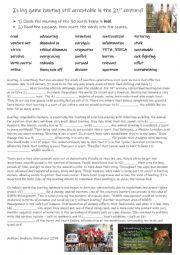
|
Is big game hunting still acceptable in the 21st century?
1300-Word reading article with a 30-word gap fill exercise about why people in so-called civilized counties still kill game animals. It takes an in-depth look at both sides of the argument regarding big game hunting:for culling, conservation and for sport.This sheet is suitable for higher level B1 to C1 students of all ages. An answer sheet is incl...
Level: intermediate
Age: 12-100
Type: worksheet
Downloads: 1830
|
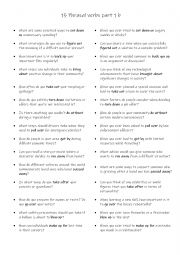
|
15 Phrasal verbs part 1 b
This is a speaking reinforcement activity for the phrasal verbs in Part 1 A. It contains 2 questions for each of the 15 phrasal verb. Suitable for pair work or small groups.This worksheet is suitable for CEFR A2-B1 level students.
Level: elementary
Age: 10-100
Type: worksheet
Downloads: 102
|
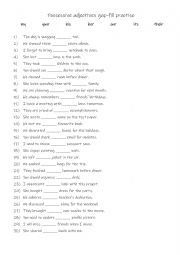
|
Possessive adjectives gap fill practise
Students read the sentence to identify the subject, then use the correctpossessive adjective to complete the gap fill. This worksheet is suitable for A1-A2 students. Answers on page 2.
Level: elementary
Age: 10-100
Type:
Downloads: 117
|
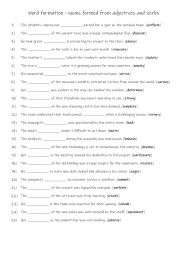
|
Word formation - nouns formed from adjectives and verbs
Vocabulary Expansion: Understanding how to form nouns from adjectives and verbs helps students build a richer vocabulary. For instance, learning that the adjective "happy" can turn into the noun "happiness," or the verb "create" can become the noun "creation," gives you more words to use and understand. Recognising patterns in word formation means ...
Level: intermediate
Age: 8-100
Type:
Downloads: 114
|
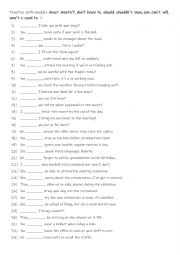
|
A1+-A2 Practise with modals must, mustn�t, don�t have to, should, shouldn�t, may, can, can�t, will, won�t & used to 1
Practising modals like must, should, can, and used to is essential for students as it enhances their ability to express necessity, advice, permission, and past habits. This not only improves their grammar and sentence construction but also builds confidence in real-life communication, whether giving instructions, making requests, or discussing poss...
Level: elementary
Age: 9-100
Type:
Downloads: 102
|
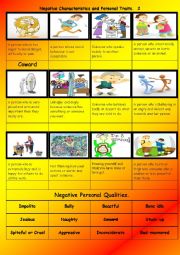
|
Negative Characteristics and Personal Traits. 2
Students look at each picture and read the description then match it with the appropriate adjective or noun. Part 2 of 3.
Level: intermediate
Age: 11-100
Type: worksheet
Downloads: 277
|
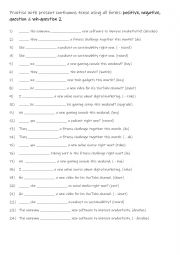
|
A1-A1+ Practise with present continuous tense using all forms positive, negative, question & wh-question 2
Each form is used 6 times! Answers on page 2.
Level: elementary
Age: 8-100
Type:
Downloads: 108
|
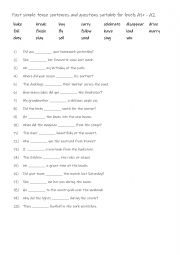
|
Past simple tense sentences and questions suitable for levels A1+ - A2
Students read the sentences and questions and then choose a suitable infinitive verb from a list of verbs in bold.They need to remember if the verb is regular or irregular! Answers are on page 2
Level: elementary
Age: 10-100
Type:
Downloads: 103
|
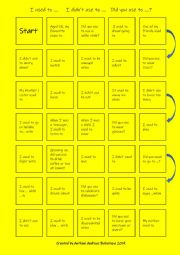
|
Talking about changes in your life
A fun board game with current topics of interest. To encourage lower level students to develop conversational skills by showing interest in what the speaker says also by asking other questions to expand conversation. This sheet should take higher level students around an hour to complete!
Suitable for both pairwork and small groups.
Level: intermediate
Age: 12-100
Type: worksheet
Downloads: 134
|
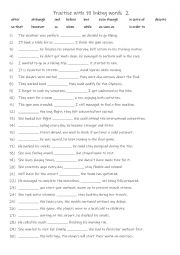
|
A2+-B1 Practise with 15 Linking words 2
Students should learn these linking words because they are essential for creating complex, logical sentences that convey relationships such as contrast (although, however), cause and effect (so that, in order to), and time (before, as soon as). Mastering them enhances writing and speaking by making language more sophisticated and engaging, as stude...
Level: intermediate
Age: 10-100
Type:
Downloads: 111
|
|
|
|
|












